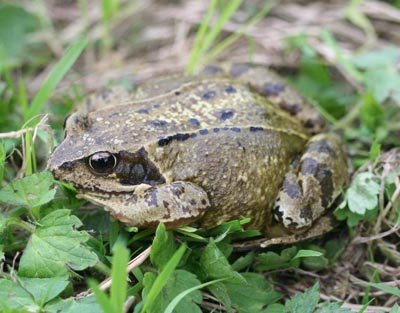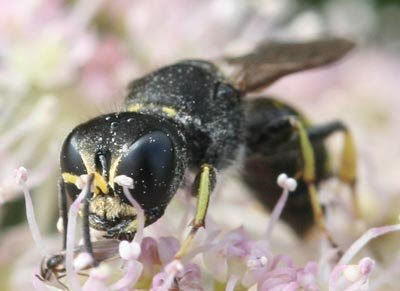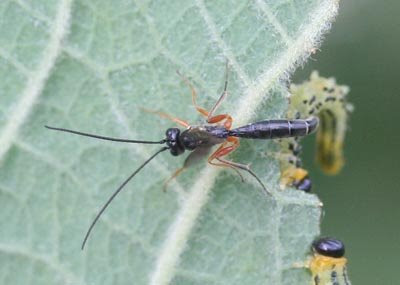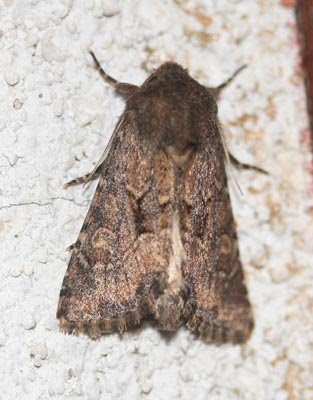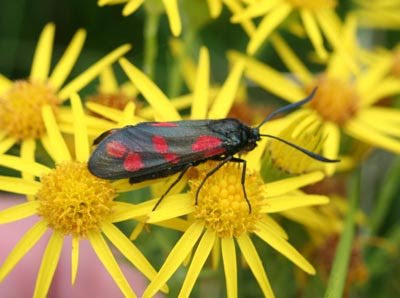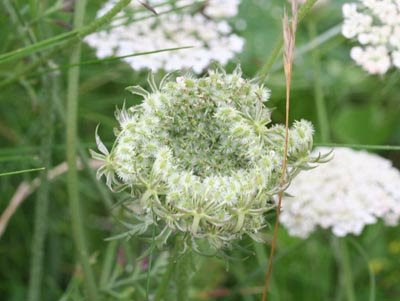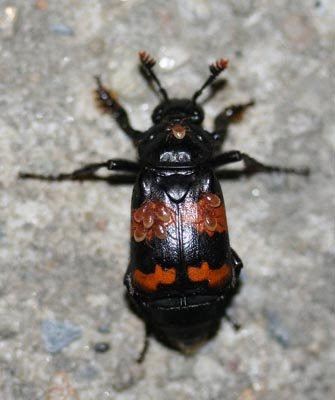Ok...here we go...
Set up
My main set up is a Canon EOS 350D with a Canon 60mm USM Macro lens. The effective focal length of the lens is 90mm., due to the 1.5 x multiplier on small-sensor Canon SLRs. This lens gives me the possibility to capture objects 1:1 on the sensor. USM stands for Ultrasonic Motor, which I'll come back to later. This set up isn't exactly compact, but it is handy and delivers the results you've seen since January 2007. Here's a look at it:

Prior to 2007, I used the Fuji s7000 as my main camera, and I loved it dearly. It's certainly easier to use (and it's cheaper), but the images, whilst very good, don't have the wow factor of the DSLR images.
Methodology
All of my shots are hand-held, so I need to set exposure to at least 160th to eliminate handshake. That means I work almost entirely at Shutter priority, leaving the camera to work out aperture. The depth of field (DOF) on a macro lens is very small indeed, so I need as much light as I can when shooting at a relatively high speed, because the aperture will automatically be opened up to compensate for the fast exposure and, sadly, DOF only increases with smaller apertures. I've experimented with different ISO and always shoot at ISO 400: ISO 1600 gets a bit too grainy for me. Depth of field is still, however, very small even at ISO 400. In order to reduce the effect of reduced DOF, I don't go in as close as I can, preferring to stay further away and crop later. The resolution of the sensor (8 megapixel) means I can crop without losing much definition.
I shoot with autofocus when I can, and the USM motor is extremely fast and very accurate. If I have to shoot on manual focus, that is quick and easy, too, with the switch being under my left thumb, on the barrel of the lens. Another good feature of the lens is that it has manual override on autofocus. In other words, I can use autofocus to get in quick and then fine-tune the focus manually without the camera complaining and trying to refocus automatically.
I tend to shoot more frames than I need, but with Digital who cares?
For flash, I just use the built-in flash unit, and it seems to work satisfactorily. I like to soften flash when I can and I usually work with a single layer of tissue paper stuck onto the flash (I just lick it first).
Although the low DOF more or less demands that I get perpendicular to my subject, I try to make sure that the surface I'm shooting (e.g. a moth wing) is also not flat on to the lens. That helps to make sure that the glare doesn't get reflected back to the camera.
For the computer work I use Photoshop CS2, but I keep my post-processing to an absolute minimum, usually just a crop and resize, with perhaps a tiny bit of brightness/contrast fine-tuning. I really believe that getting the shot correct in the camera is the right way to go. I work entirely in .jpg. I have tried RAW, but didn't find the (very slight) increase in quality was worth all the post-processing effort.
In terms of finding material to shoot and making identifications, that would take a book to cover.
But, in summary:
- get to know your environment
- practise by taking lots of shots (they're free)
- watch and study trends and movements
- get your hands on the best set of books you can afford
- join a wildlife society
Maybe some time soon I'll discuss my library.
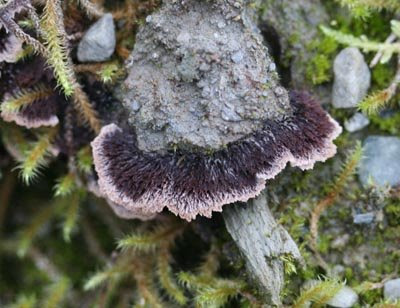

 I also spotted this recently-emerged Angle Shades moth. Newly emerged specimens have the pink and olive markings, slightly older specimens have only shades of orange/rust.
I also spotted this recently-emerged Angle Shades moth. Newly emerged specimens have the pink and olive markings, slightly older specimens have only shades of orange/rust.



